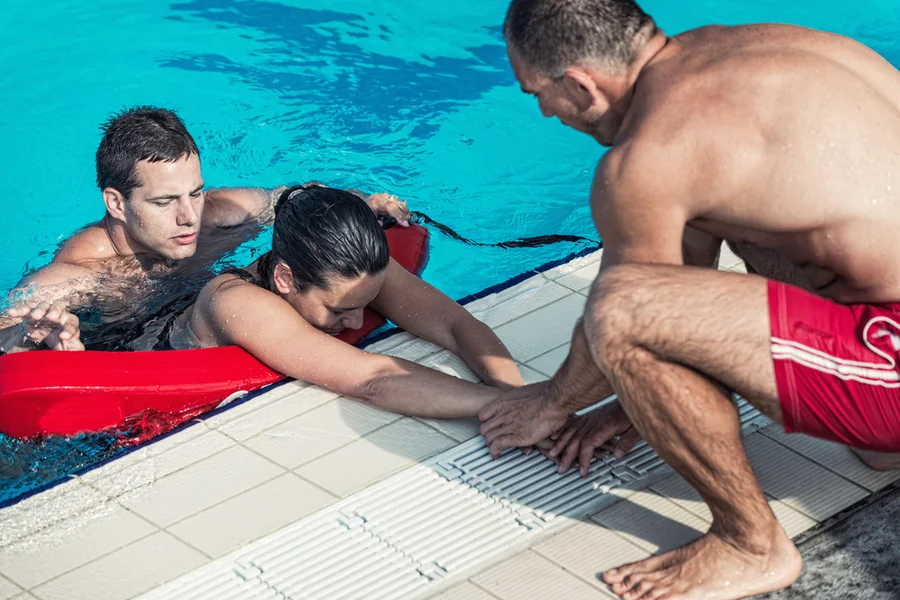
Becoming a lifeguard is not just a job—it’s a responsibility that carries the weight of saving lives. To excel in this role, one must undergo proper training and certification. A lifeguard course provides aspiring individuals with the skills and confidence to respond effectively during emergencies. Among the various training programs available, the Lifeguard Course offered by the American Lifeguard Association (ALA) stands out for its comprehensive approach, experienced instructors, and recognition across the United States.
This article delves into the essentials of a lifeguard course, highlights the features of the ALA’s program, and explores why this certification is a valuable investment for future lifeguards.
What Is a Lifeguard Course?
A lifeguard course is a structured training program designed to equip participants with the knowledge and skills needed to ensure safety in aquatic environments. These courses cover a wide range of topics, including water rescue techniques, CPR, first aid, and the use of automated external defibrillators (AEDs).
The objective of such courses is to prepare lifeguards to act swiftly and effectively in various scenarios, from minor injuries to life-threatening emergencies. Completing a lifeguard course is typically a prerequisite for employment in pools, water parks, beaches, and other aquatic settings.
Key Components of a Lifeguard Course
- Water Rescue Skills
Lifeguard courses teach participants how to identify distressed swimmers, approach them safely, and perform rescues using techniques such as reaching assists, throw rescues, and swimming rescues. - CPR and First Aid
Participants learn cardiopulmonary resuscitation (CPR) techniques for adults, children, and infants. First aid training includes handling cuts, sprains, and fractures, as well as recognizing and managing medical emergencies like strokes and heart attacks. - Emergency Preparedness
Courses emphasize the importance of vigilance, effective communication, and quick decision-making during emergencies. - Legal and Ethical Responsibilities
Aspiring lifeguards are educated about their duties, liabilities, and the importance of maintaining a professional demeanor while on duty. - Physical Fitness
Lifeguard training often includes swimming tests and endurance exercises to ensure participants are physically capable of performing rescues.
Why Choose the American Lifeguard Association?
The American Lifeguard Association (ALA) is a renowned organization dedicated to promoting water safety and lifeguard training. Their Lifeguard Course is considered one of the best in the industry for several reasons:
1. Comprehensive Curriculum
The ALA’s course covers all critical aspects of lifeguarding, from basic water safety to advanced rescue techniques. The training is designed to cater to various aquatic environments, making it versatile and practical.
2. Experienced Instructors
The ALA boasts a team of highly qualified instructors who bring years of real-world experience to the classroom. Their guidance ensures participants gain both theoretical knowledge and practical expertise.
3. Flexible Learning Options
Understanding the diverse needs of learners, the ALA offers in-person and blended learning formats. The online modules provide theoretical knowledge, while the in-person sessions focus on hands-on training.
4. Recognition and Credibility
Certification from the American Lifeguard Association is recognized nationwide, making it easier for graduates to secure employment in various aquatic settings.
5. Ongoing Support
The ALA provides resources and support even after the course is completed. Whether it’s recertification or access to updated training materials, the organization ensures its certified lifeguards remain equipped with the latest knowledge and skills.
What to Expect During the ALA Lifeguard Course
The ALA Lifeguard Course is designed to be both educational and engaging. Here’s a brief overview of what participants can expect:
- Pre-Course Assessment: Participants must pass a swimming test to demonstrate their ability to swim a certain distance and retrieve objects from deep water.
- Interactive Training: The course includes classroom sessions, video demonstrations, and practical exercises in the pool.
- Real-World Scenarios: Trainees practice responding to simulated emergencies, helping them build confidence and hone their skills.
- Certification Exam: To earn their certification, participants must pass a written test and practical assessment.
The Importance of Lifeguard Certification
Earning a lifeguard certification is more than a requirement for employment—it’s a testament to an individual’s commitment to safety and preparedness. Certification provides:
- Enhanced Employability: Certified lifeguards are highly sought after by employers in aquatic facilities.
- Confidence: Training instills the confidence needed to handle emergencies effectively.
- Legal Compliance: Many states and employers require lifeguard certification to ensure safety and liability compliance.
Recertification: Staying Updated
Lifeguarding skills can diminish over time, making recertification essential. The ALA offers recertification courses to ensure lifeguards remain proficient in their skills and updated on the latest safety protocols.
Why Lifeguard Training Is a Lifelong Asset
Lifeguard training isn’t just about aquatic safety—it also cultivates valuable life skills such as leadership, teamwork, and resilience. These qualities are transferable to various aspects of life and career, making the training a worthwhile investment.
How to Enroll in the ALA Lifeguard Course
Enrolling in the ALA Lifeguard Course is simple. Visit the ALA’s website, choose a course location or format that suits your needs, and complete the registration process. The course is open to individuals who meet the age and swimming prerequisites, ensuring that only qualified candidates participate.
Conclusion
A lifeguard course is the foundation of a career in lifesaving. It equips individuals with the skills, knowledge, and confidence to safeguard lives in aquatic environments. The American Lifeguard Association stands out as a leading provider of lifeguard training, offering a program that combines comprehensive education, practical experience, and nationwide recognition.
By enrolling in the ALA Lifeguard Course, you not only take the first step toward a fulfilling career but also join a community committed to safety and excellence. Dive into this opportunity and make a difference—one rescue at a time.